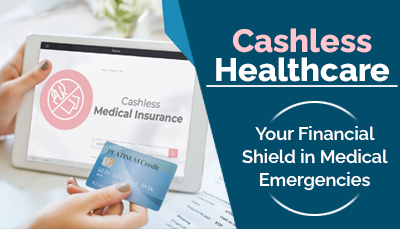
In today's world, a sudden medical crisis can quickly turn into a financial nightmare for middle-class families. Imagine rushing a loved one to the hospital, only to be confronted with mounting bills that threaten to drain your life savings. This is where cashless healthcare emerges as a beacon of hope, offering a practical solution to manage unexpected medical expenses.
Cashless hospitalization is like having a financial guardian angel during medical emergencies. Simply put, it's a facility provided by most private health insurance policies that allows you to receive treatment at select hospitals without paying upfront. Instead of scrambling to arrange immediate cash or running between hospital billing counters and bank ATMs, the insurance company directly settles the hospital bills.
Unlike traditional reimbursement claims where you pay first and claim later, cashless treatment means the hospital and your insurance provider handle the financial coordination. It's similar to how a corporate expense account works – you receive the service, and the company takes care of the payment.
Think of empanelled hospitals as trusted partners in your health insurance network. These are hospitals that have formal agreements with insurance companies to provide direct billing services. When you're admitted to an empanelled hospital, a dedicated team coordinates with your insurance provider through Third-Party Administrators (TPAs) or direct insurer desks.
This partnership ensures a smooth financial process. The hospital submits treatment details and estimated costs to the insurer, who then approves and directly pays the bill, minus any policy exclusions or sub-limits.
Cashless healthcare isn't just a financial tool; it's peace of mind during stressful medical situations. Consider these compelling advantages:
- Policy Verification: First, thoroughly understand your health insurance policy and identify network hospitals.
- Pre-Authorization: For planned procedures, submit a pre-authorization form to your insurer.
- Emergency Protocols: In urgent cases, inform the hospital about your insurance immediately.
- Documentation: Always carry your insurance card, ID proof, and policy copy.
- Hospital Coordination: The hospital will liaise with your insurer for approvals.
- Payment Processing: The insurer pays the hospital directly; you only cover excluded expenses.
Not all treatments are created equal in the insurance world. Be aware that:
Cashless healthcare is more than just a financial instrument – it's a powerful tool that provides middle-class families with financial security during medical uncertainties. Consider investing in a comprehensive health insurance policy, even if you're young and healthy. In the unpredictable world of medical emergencies, being prepared can make all the difference.

